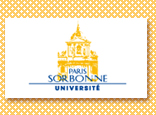| LION (LIterature ONline)
a database containing the text of numerous English literary works
of all periods; it also contains bibliographies of secondary material
(critical works), with articles in full text, and links to related
websites.
- for search strategies, see CATI website http://www.cati.paris4.sorbonne.fr
then (in left-hand menu) "Campus Numérique/ Formation documentaire"
then "1: Ressources: mode d'emploi des bases de données auxquelles
le centre CATI est abonné, par Raeleen Chai-Elsholz"
Search strategies for full-text databases
- It allows keyword
searches (searches for all the occurrences
of a given word you select by typing it in a search box)
- selection of keywords:
- first select the most obvious keyword corresponding to
your research -- the one which you know was used in the
period you are studying (beware of anachronisms) and perform
a search;
- then look at the context of the occurrences which have
been retrieved and find synonyms, on which you may perform
another search
- limiting the search field: you may choose to perform the
search on a restricted corpus
(the whole 'body' of the materials selected for study),
limiting it by period, literary movement, origin of the
author...
- Search concepts:
- some of the concepts used for searching bibliographical databases
(e.g. Boolean operators , see
lesson on Search strategies in the section Information skills of the present website, under "cours et séminaires, DEA") may be applied to full-text databases
- truncation: (see "stemming"
in the Greenwich
website ) you may replace a few letters in a word, e.g.
the ending, by a symbol such as the asterisk * serving as a
wildcard; the search engine will retrieve all words which contain
the letters you have typed, combined with various endings.
- a search for "navig*" will retrieve occurrences of "navigate"
"navigated" "navigating" "navigation" "navigator(s)"
- proximity operators: when
your search includes two terms, you may combine them in three
different ways:
- putting the combined expression between quotation marks:
"silver sea" will retrieve all the cases whre the
two words occur in this exact phrase
- using and: silver and sea will retrieve texts where
the two words occur, not necessarily in this order, e.g.
the sea was like silver
- using the "proximity operators": specifying that the two
words may be separated by a maximum of ... words (give a
figure)
sea near.5 silver will retrieve "the sea was like
silver" but not "the sea was green, though the distance
was silver". Conversely,
sea near.9 silver will retrieve the second sentence
as well.
According to the stylistic effects you are investigating
-- for instance, a terse style with oxymoronic contrasts,
or a loose suggestive style -- you will select the various
options (e.g. near.3 in the first case, near.9 in the
second one). You may perform different types of searches
and compare the results.
Perform searches on the topics of our syllabus
in the corpus of selected eighteenth-century novelists , comparing
the results obtained according to the search strategies used. |



